 Stretching 541 meters across the Firth of Forth near Edinburgh, the Forth Railway Bridge stood as the longest cantilever bridge in the world when its final “golden” rivet was driven into place on March 4, 1890, by the future King Edward VII.
Stretching 541 meters across the Firth of Forth near Edinburgh, the Forth Railway Bridge stood as the longest cantilever bridge in the world when its final “golden” rivet was driven into place on March 4, 1890, by the future King Edward VII.
Though later surpassed in length by Canada’s Quebec Bridge in 1919, the Forth Bridge remains an engineering marvel and still holds the second spot globally. Its striking form and immense scale continue to inspire admiration more than a century after its completion.
Recognized for both its significance and its striking appearance, the bridge underwent a major restoration in 2012.
In 2015, it was officially declared a UNESCO World Heritage Site, praised for its raw structural power and visual clarity.
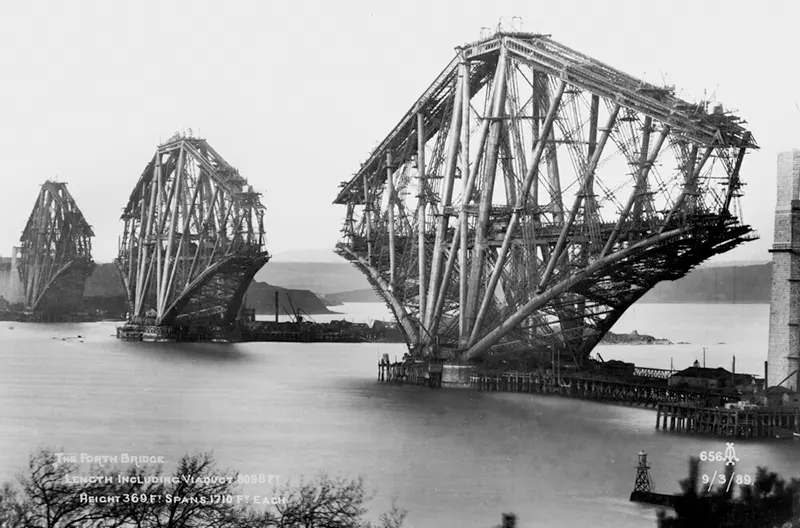 As UNESCO noted, “Its distinctive industrial aesthetic is the result of a forthright and unadorned display of its structural components.”
As UNESCO noted, “Its distinctive industrial aesthetic is the result of a forthright and unadorned display of its structural components.”
More than just a visual statement, the Forth Bridge is a milestone in civil engineering. “Innovative in style, materials and scale,” UNESCO continued, “the Forth Bridge marks an important milestone in bridge design and construction during the period when railways came to dominate long-distance land travel.”
The following year, it was voted Scotland’s greatest man-made wonder, a title that captures both its national pride and global significance.
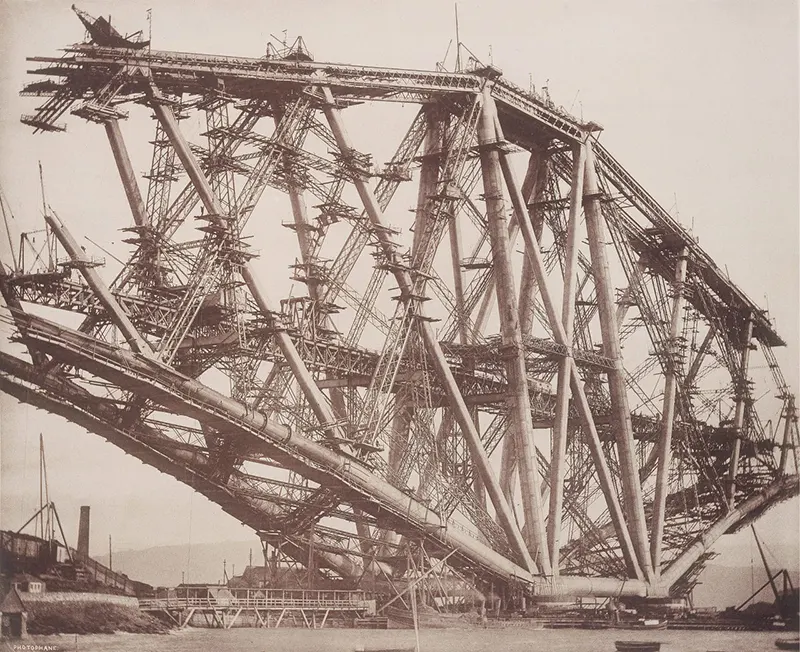
The Fife cantilever under construction during October 1888. This was the first steel bridge, and was built with tubes fabricated from sheet steel produced by the Siemens-Martin process.
The effort to span the estuary began in the 1870s, driven by the growing demand for reliable rail links across Scotland.
According to The Scotsman, “The idea to create a permanent rail crossing over the Forth estuary came about in the 1870s, when engineer Thomas Bouch was enlisted to design a railway suspension bridge to replace the Granton train ferry.”
However, before his plans could take shape, tragedy struck. In 1879, Bouch’s Tay Bridge collapsed during a storm, killing over 70 passengers. The disaster ended his involvement and cast a long shadow over suspension bridges in general.
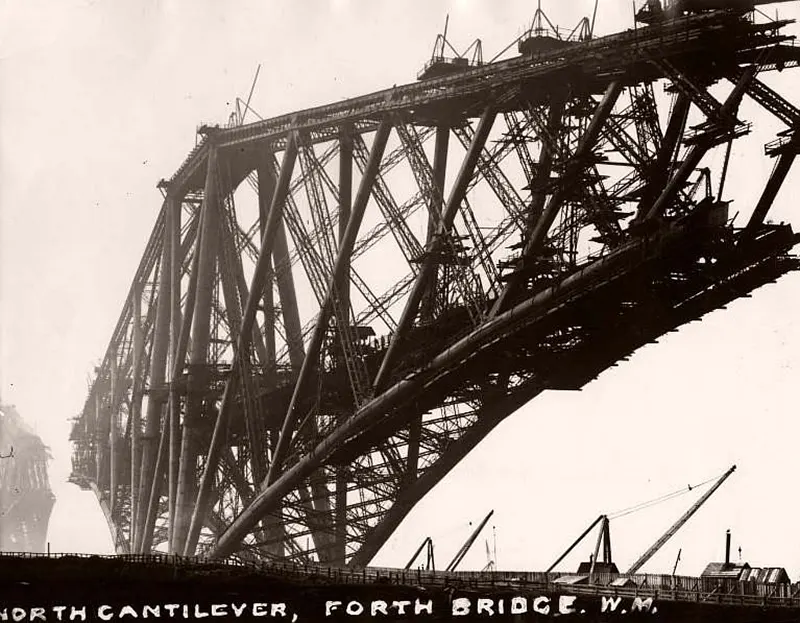 Responsibility was handed to a new team—English engineers Sir John Fowler and Sir Benjamin Baker.
Responsibility was handed to a new team—English engineers Sir John Fowler and Sir Benjamin Baker.
They proposed a cantilever design, better suited to withstand the region’s powerful winds and the weight of heavy freight trains.
Construction officially began in 1882 with the sourcing of materials, followed by the laying of foundations the next year. This early phase was especially hazardous.
Workers had to sink enormous wrought iron caissons deep into the seabed to anchor the granite piers. The work was grueling, slow, and dangerous, taking three years to complete just the foundations.
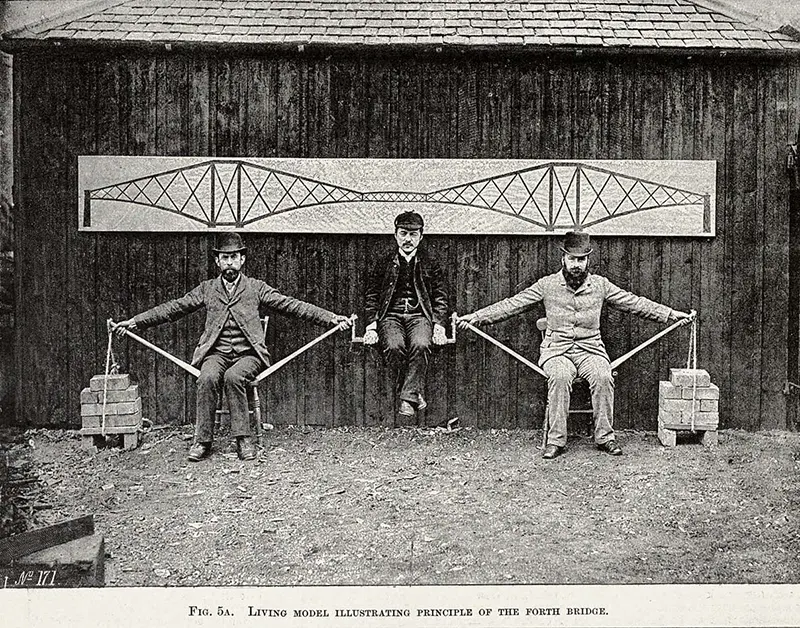
Illustration of the cantilever principle.
Rising 150 feet above the water, the bridge was designed to allow large ships to pass beneath with ease. In terms of scale, the numbers remain staggering even today.
The Forth Bridge “required ten times the amount of metal as the Eiffel Tower in Paris,” a testament to the ambition behind it.
At the time of its construction, it was the largest steel building project in Britain, using some 55,000 tons of steel.
What makes this all the more impressive is the context: this was achieved with 19th-century tools and without the safety standards of modern construction.
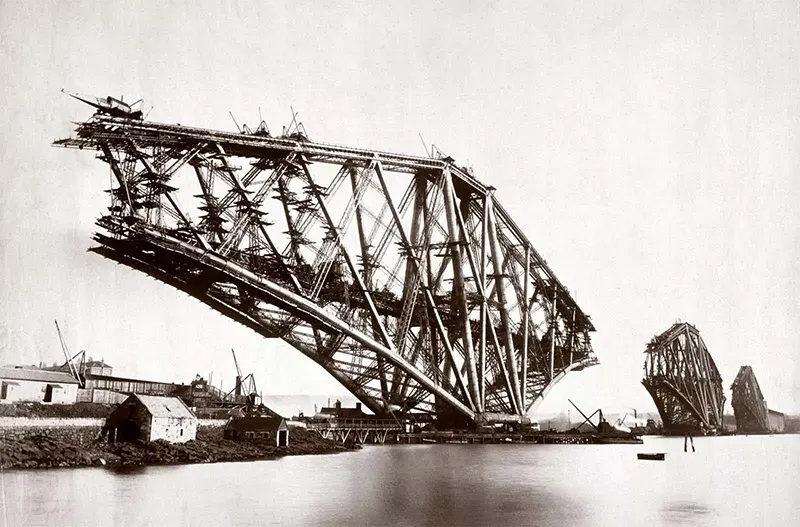 At its busiest, the construction site employed roughly 4,600 workers. “During the seven years of construction,” the Forth Bridges site records, “work was carried out from almost 100 feet below the surface of the water to over 300 feet above the surface.”
At its busiest, the construction site employed roughly 4,600 workers. “During the seven years of construction,” the Forth Bridges site records, “work was carried out from almost 100 feet below the surface of the water to over 300 feet above the surface.”
Despite the scale and care taken, the toll on human life was real—historians estimate that at least 63 men died during the project.
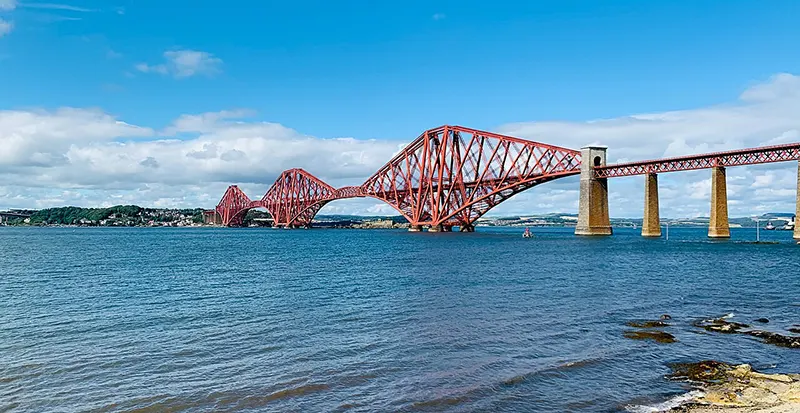
Forth Bridge in July 2022.
The assembly of the superstructure began in 1886. As the towers grew upward and the cantilever arms extended toward one another, the sight drew attention from far and wide.
The progress seemed almost impossible to believe, as if the massive iron limbs defied gravity. Then, in December 1889, construction reached its end.
A formal load test followed in January 1890, in which two trains—each composed of three locomotives and 50 coal-laden wagons—were slowly driven across the bridge.
Together, they weighed 1,880 tons, more than twice the structure’s intended design load. Engineers monitored the bridge’s deflection under the weight, which performed exactly as predicted.
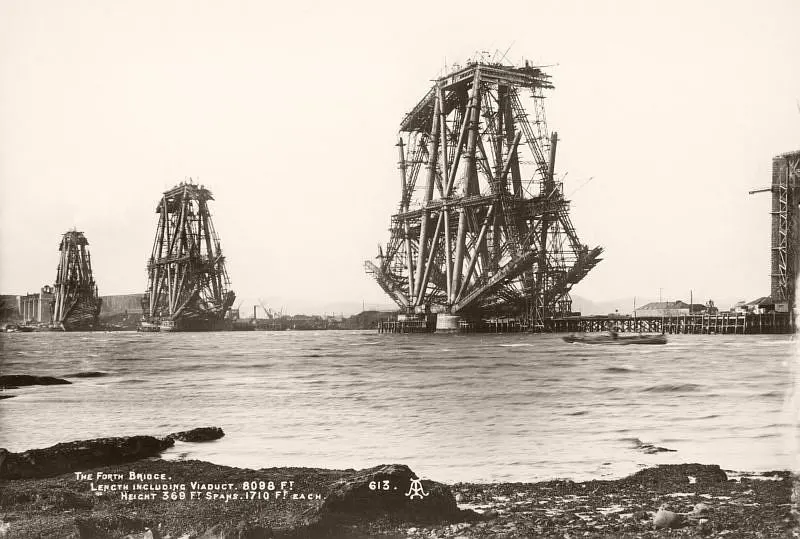
The cantilever towers are almost finished in 1888.
Photographs taken between 1886 and 1890 capture the immense cantilever arms as they emerged between South Queensferry and North Queensferry, documenting the transformation of the landscape as steel overtook sky and water.
The bridge—renamed the Forth Railway Bridge to distinguish it from later road bridges—soon became synonymous with its vivid red paint. Its maintenance challenges even gave rise to a well-known saying.
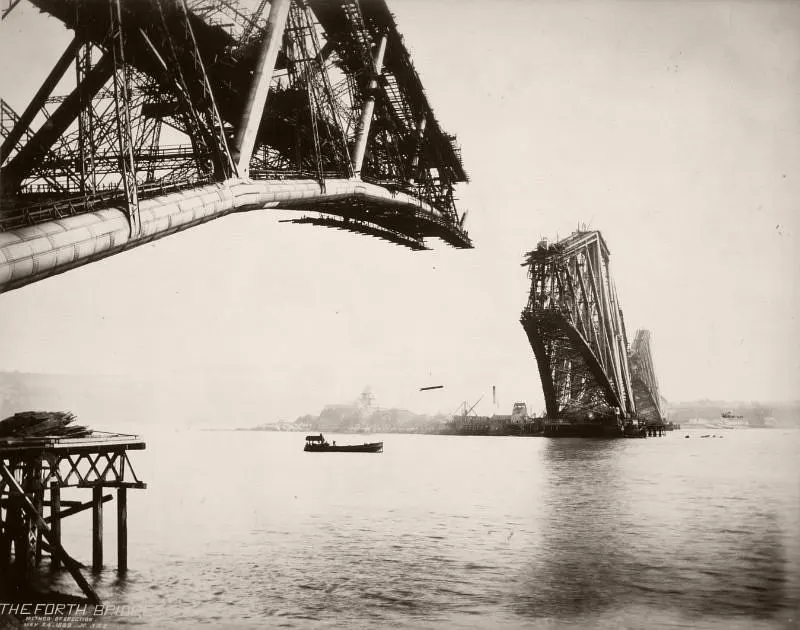 “Painting the Forth Bridge” became a colloquial expression for an endless task. The phrase emerged from the mistaken belief that the bridge was in a constant cycle of repainting—workers beginning again at one end as soon as they had finished the other.
“Painting the Forth Bridge” became a colloquial expression for an endless task. The phrase emerged from the mistaken belief that the bridge was in a constant cycle of repainting—workers beginning again at one end as soon as they had finished the other.
In reality, there was no such continuous loop. Weathered areas received priority, and a permanent crew was assigned to oversee the upkeep.
Between 2001 and 2011, however, the entire structure was coated in a new, specially designed finish expected to last 25 years.
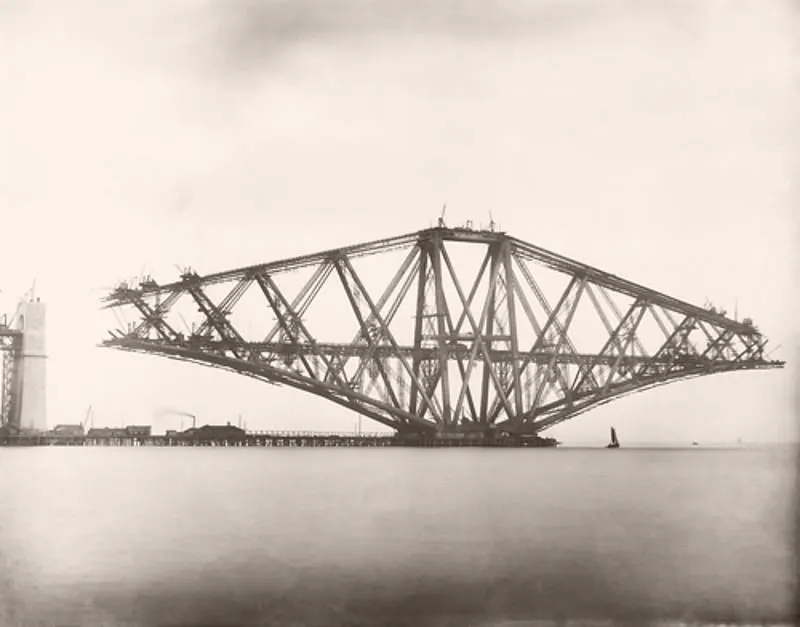
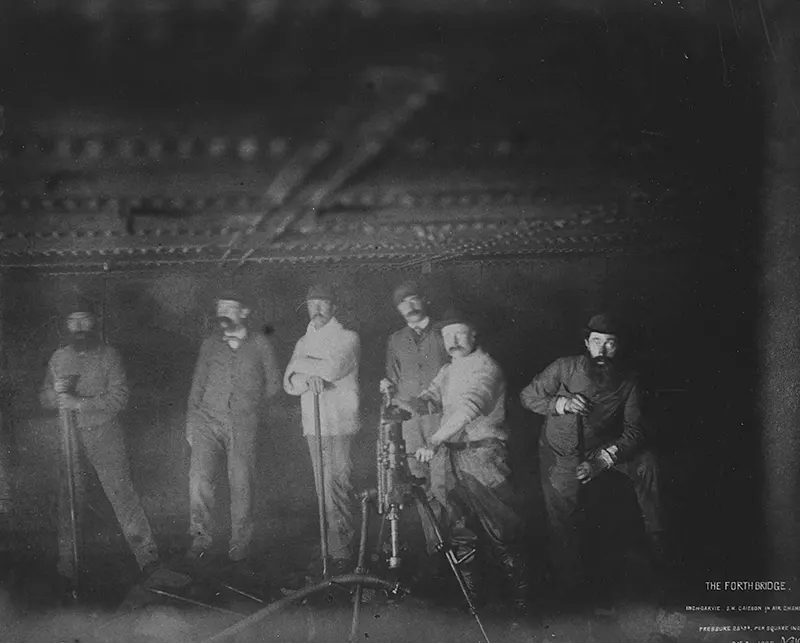
Working inside a caisson.
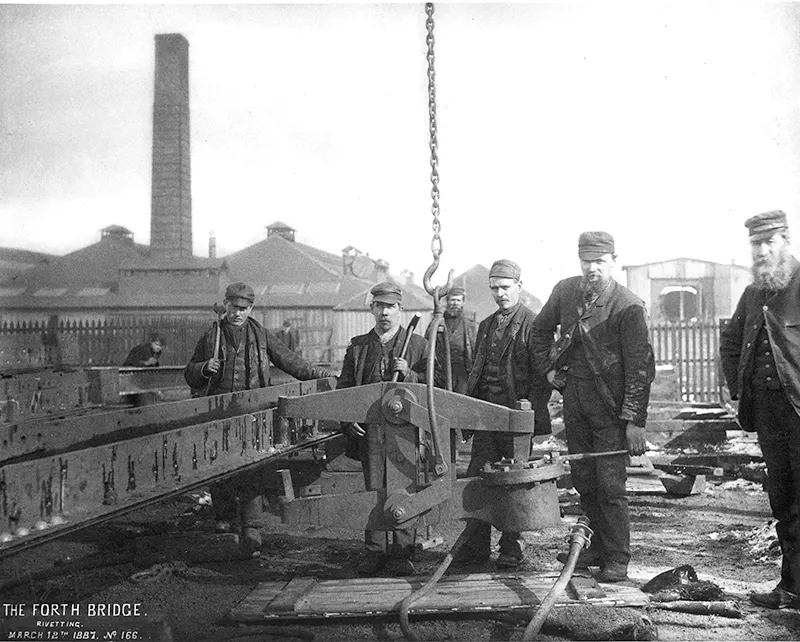
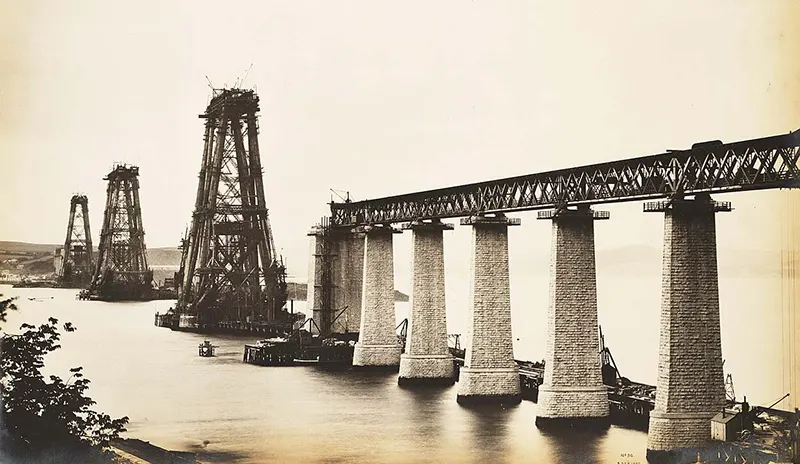
A view from South Queensferry of the bridge’s cantilever towers being built in 1887.
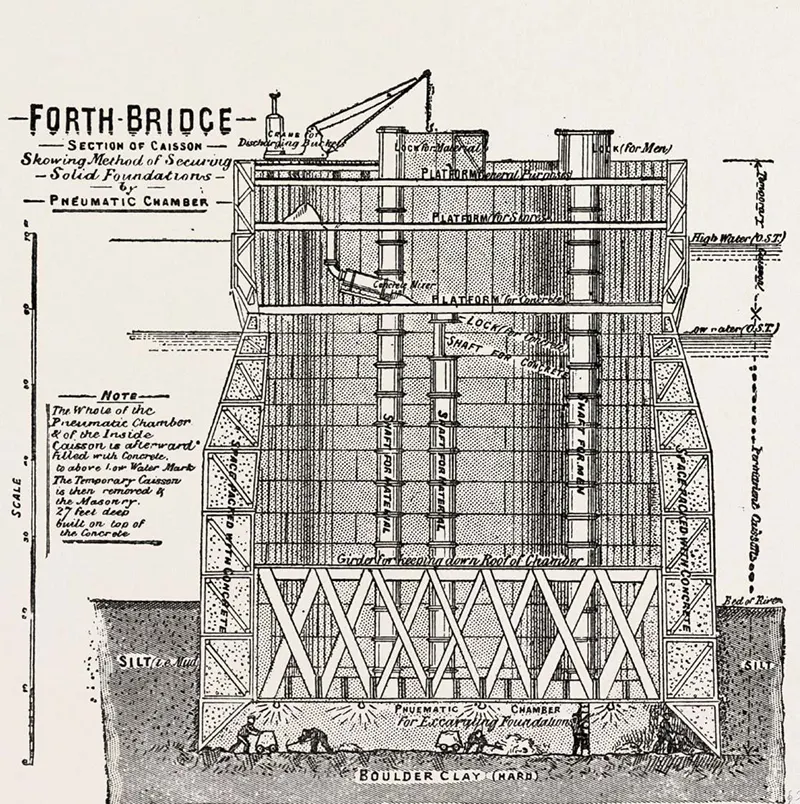
The Forth Bridge. Section showing the interior of a caisson, 1890.
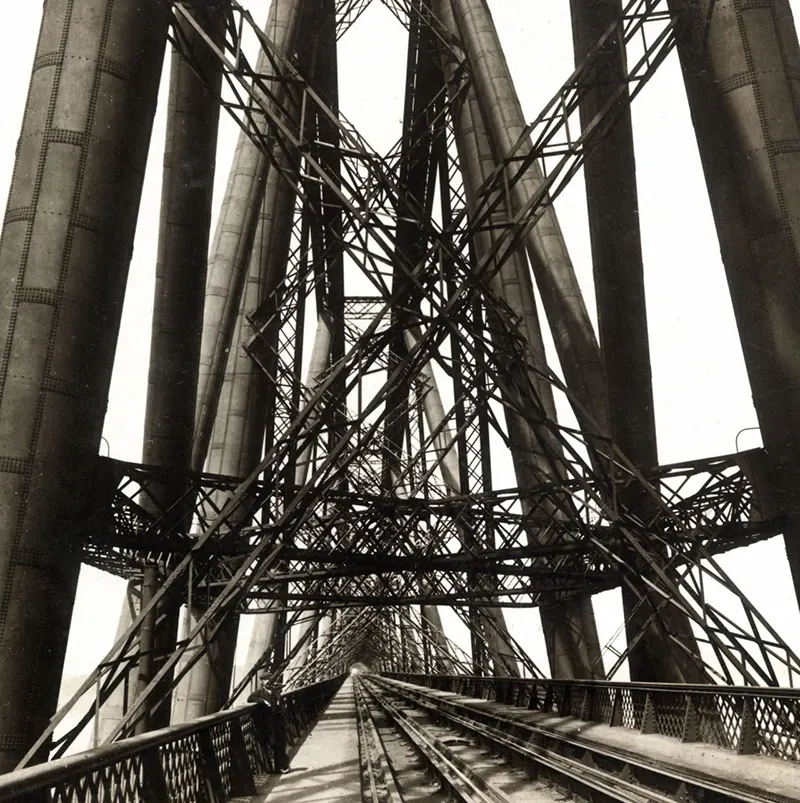
A view through the Forth Bridge, spanning the firth of forth, Scotland, 1902.
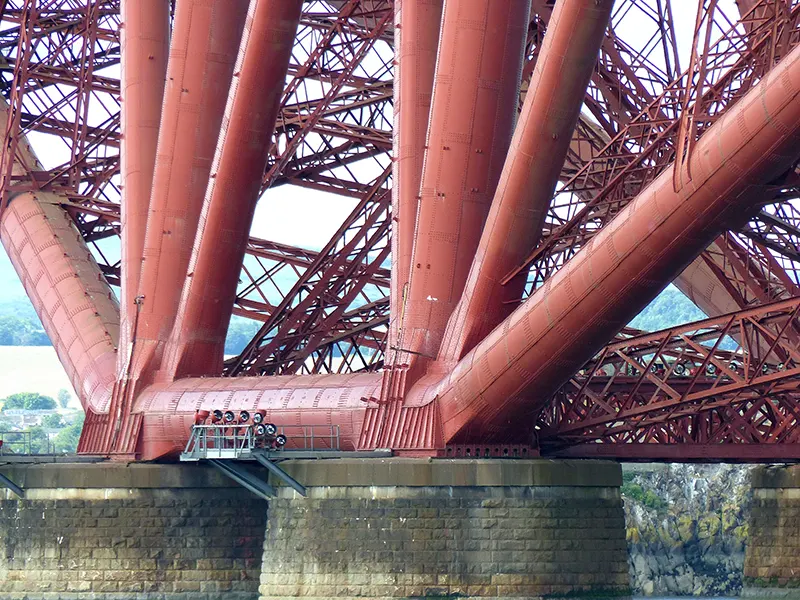
Close up on the base of one of the three double-cantilevers of the bridge.
(Photo credit: Wikimedia Commons / RHP).